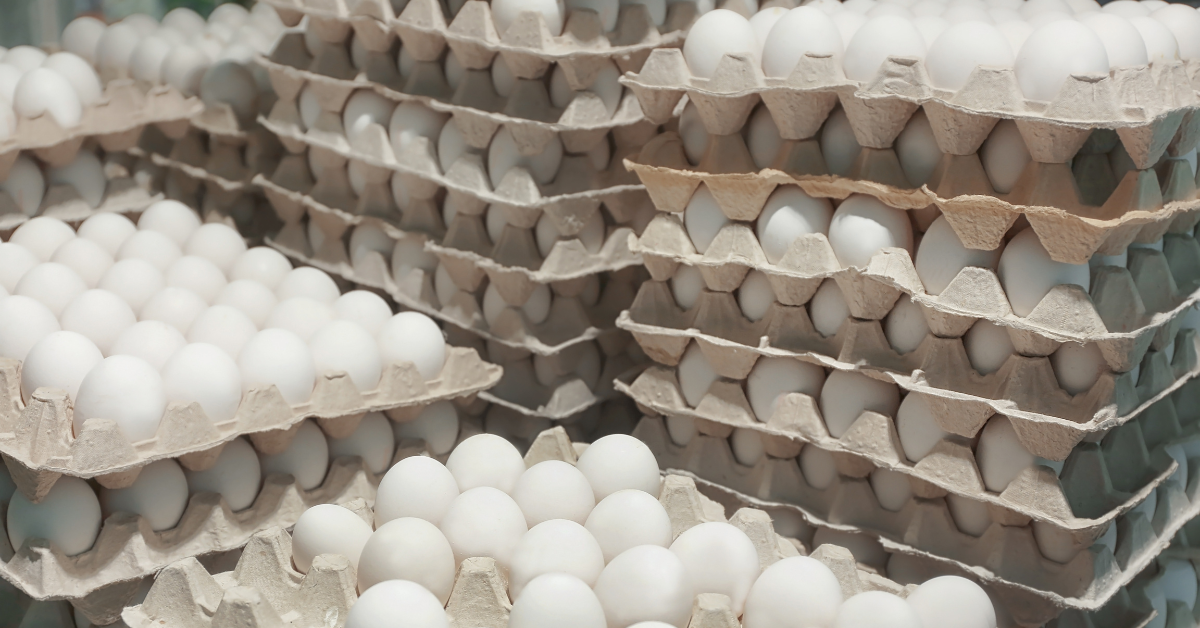In our modern society, we often take the warmth of our homes for granted, not understanding how our homes' intricate heating systems use electricity or natural gas to combat chilly outdoor temperatures.
When there's a power outage, and we're forced to look for alternative heat sources, we quickly recall our dependency on these systems and feel the rapid onset of cold seeping into our homes and bodies.
For those whose homes depend on an electric heat system to stay warm, don't disregard this information. This article will discuss heating without electricity, allowing you to keep yourself and your family warm when the power grid fails.
Be prepared for anything!Download our free preparedness checklist today to ensure you have everything you need in an emergency.
Why Heating Without Electricity or Gas Is Important
According to the U.S. Energy Information Administration, about 36% of households in the United States depend on electricity for heating.Throughout all the regions of the country, there are roughly 12.1 million households that rely on electric heat pumps. Moreover, the majority of these homes, roughly 9.3 million, are located within the hot and humid regions of the Southeast, where electrically powered heating is most effective.
As we explore ways to heat a room without electricity, you'll learn how families sustain their self-reliant livelihoods with these alternative heat sources, ensuring comfort and warmth during even the harshest conditions.
Electric heating pumps are less common in colder regions of the United States. However, over the years, advances in electrical heating technology have made electric space heating more accessible to households living in regions with lower winter temperatures.For example, in 2015, 1.3 million households in the cold (and very cold) climate regions of the United States used electric heating systems. And even if you use a natural gas furnace, without electricity to run the blower motors, these heaters don’t work either.
So then, how do the folks living in the Southeast stay warm if a hurricane shuts down the power? And how do the families in the northern parts of the United States stay warm when a blizzard knocks out the power grid? Or what about the households that are located in thebest places to live off-grid and choose to live without municipal electricity on purpose?
For these families, having alternative heat sources for power outages is a vital component of their self-reliant livelihood. Alternate heat sources mean they can keep their families comfortable and warm during even the darkest and coldest times.
Five Alternative Heat Sources When You Have No Electricity
There are various ways you can stay warm without electricity. In this section, we share five alternative heat sources to keep out the cold.
Are you prepared for a power outage? Download our free preparedness checklist now!

Cheapest Ways to Heat a Room Without Electricity: Portable Propane Heaters
Propane heaters are an ideal plan B for heating when the power goes out. Propane is a great fuel source because it can be used indoors and has an extremely long shelf life. Propane will also emit a telling strong odor from a chemical additive calledmercaptan that will alert you when there is a leak.
Portable propane heaters are lightweight and efficient. As you begin shopping around, make sure to purchase only propane heaters designed for indoor usage.
High-quality indoor propane heaters are very safe. Many of the best models will come with an oxygen depletion sensor, which will shut the heater off if there is inadequate oxygen for complete combustion. Many of them also have tip-over sensors that will shut off the heater in the event the heater is accidentally knocked over by a clumsy pet or family member.
DIY Heaters
Store-bought heaters are fantastic. But we also think it’s an important skill to know how to completely improvise and create a DIY heater with objects you already have around the home or cached in your emergency supplies.
In the quest for independence and self-reliance, DIY heaters are a handy skill to have. This section teaches you how to create heaters with objects readily available around the home or in your emergency supplies.
Terracotta Pot Heater
Terracotta pots are versatile. They look good in displaying your plants, and you can repurpose them to make a DIY heater. It’s important to mention that terracotta pot heaters will not heat an entire house, but can provide warm localized heat.
Materials you will need:
- Two terracotta pots of different sizes: one large and one small
- Canned heat or tea candles
- A fire source
- A folding stove or some way to elevate the heater
Just put candles inside one pot and light them. Place the other terracotta pot on top upside down to create a covered dome. The candles will heat the pots and radiate heat around the room.
Stoneware Heater
If you don’t have any terracotta pots lying around, that’s okay. You can construct a DIYstoneware heater instead.
You construct stoneware heaters in the same way as terracotta pot heaters. However, instead of using a terracotta pot, you can use the ceramic stoneware dinnerware you have in the kitchen.
Soda Can Burner
Soda can burners are lightweight and portable DIY heaters. They make good additions to your survival kit so that when you’re stuck outside in the cold, you can provide at least a little warmth, cook food or boil water.
[product_render product-handle="entree-bucket"]
The idea behind a soda can burner is straightforward. Essentially, a soda can is used as a reservoir to hold alcohol. The can is filled and then ignited. When the fuel is ignited, flames pour out of the holes in the can to function as a miniature stove.
Materials you will need:
- Empty soda cans
- Alcohol for fuel (denatured is best, but rubbing alcohol will also work)
- Pushpins
- Hammer
A step-by-step manual of how to make DIY terracotta, stoneware, and soda can heaters or stoves goes beyond the scope of this article. However, we found a variety of helpful YouTube videos made by homesteaders and preppers after a simple search for each type of DIY heater.
Wood-Burning Fireplace or Oven
Using wood as fuel has been a strategy for staying warm for centuries. Wood-burning fireplaces and ovens continue to be an efficient way to heat your home without electricity.
However, there are a few drawbacks to wood fireplaces and stoves.
The first is the extra labor required to make them work. Obviously, you need to prepare the fuel ahead of time, which can be labor intensive. Fireplaces and stoves also make quite a mess and leave behind an odor (although many of us like the smell). Fireplaces, chimneys, and ovens also require routine cleaning to prevent buildup.
But if you can look past the extra work involved with heating your home with a wood-burning fireplace or oven, wood-burning stoves and fireplaces are extremely reliable and efficient.
Alcohol Heaters
When the power goes out, alcohol heaters are another viable option for creating heat without electricity. Denatured alcohol, like propane, is an ideal fuel source for your prepper supplies because of its indefinite shelf-life. Denatured alcohol is also safe to burn indoors.
Nowadays, there are many different types of alcohol heaters on the market. The best models are lightweight and highly portable. In addition, modern alcohol heaters are efficient. Typically, a quart of alcohol fuel will burn for upwards of five hours on its highest setting, and longer if burned on its lower setting. They are also versatile—working as a heater and stove.
Harnessing the Sun: Solar Heating Without Electricity

Let’s not forget the most extraordinary heater at our disposal—the sun. There are two ways to harness the sun's energy to heat your home.
-
Passive Solar Heating
Passive solar heating relies on the heat your home can gain while the sun shines on it throughout the day. The heat that passes through your windows and skylights is absorbed into the home, typically the flooring and walls.
For best results, your home needs modern insulation and energy-efficient windows and doors. You can also make minor renovations to your home, like adding south-facing windows and skylights to allow more sunlight to heat the house.
2. Active Solar Heating
Active solar heating systems are much less common. The reason is that they require professional installation and a higher initial cost. However, if you have the budget to invest in anactive solar heating system for your home, it will pay dividends in the long run.
In an active solar heating system, the sun’s energy warms up water or air stored in the roof panels. Then, the heat from the solar system is transferred into the living areas of the home with a blower or radiant heat system.
An obvious drawback of this system is that it requires electricity. However, some solar systems power themselves with the sun’s energy and not with electricity from the power grid. You can also consider using an emergency generator to keep your active solar heating system functioning.
Safety Considerations for Making Heat Without Electricity
The heating systems that provide warmth to our homes function safely by themselves most of the time. Besides carbon monoxide detectors, we typically don’t take many other safety precautions.
However, if the power goes out, you will need to improvise; and depending on the alternate heat source you improvise with, you may need to take extra steps to keep your home and family safe. Make sure not to use other heat sources indoors if they discharge carbon monoxide. Families die every year from moving a charcoal BBQ grill indoors for heat.
Here are sevenfire safety considerations we recommend considering when using alternative heat sources without electricity:
-
Heaters should be kept away from drapes, beds, walls, or other flammable materials.
-
Heaters should be used in a location where they cannot be knocked over.
-
You should always use your heaters in a well-ventilated space. For example, crack a window open or leave the door ajar.
-
Depending on the heater, it’s a good idea to place an insulating layer between the base and the surface it is sitting on. For example, a layer of stones, brick, or stone tile can help insulate.
-
Install smoke and carbon monoxide detectors in every room of your home. Make sure they are functioning correctly, and regularly replace the batteries.
-
Keep your heaters out of reach of children and pets.
- Try not to leave your heaters unsupervised for long periods of time.
Other Actions You Can Take To Stay Warm
Most of us rely heavily on the heaters in our homes to keep us warm. We crank up the thermostat to stay warm when it gets cold outside, and often forget that there are other actions we can take to stay warm, regardless of whether the power is out or not.
-
Properlyinsulate your home – Many of us don’t get to choose how our homes are built. But if you do have this luxury, make sure to properly insulate your home. In addition, as you make renovations to your home, make sure insulation is a top priority. Also, don’t forget simple insulating tricks like applying window film and replacing the weather stripping.
-
Prepare adequate clothing– Part of yourfamily survival kit and family bug-out bags should be extra clothing for every family member. As the weather changes, everyone can remain warm and dry.
-
Use extra blankets and sleeping bags –survival food buckets containing food that lasts a long time should not be the only thing you have prepped in the basement for emergencies. We recommend also having extra blankets and sleeping bags to help keep you warm without electricity.
-

-
Remain active– One of the best ways to warm up your body is through physical exercise. So while you bug in to wait out the storm, think about what simple exercises you can do to fill your time and stay warm.
-
Fire up the generator– An emergency generator is a critical tool for scenarios where you lose power. Remember—your fuel source is finite, and eventually, you will run out and be at square one once again, so make sure to have a backup plan.
Final Thoughts on Heating Without Electricity During Power Outages
If you have ever experienced a power outage due to a natural disaster, you understand how vital having an alternate heat source is.
Don’t take chances. Prepare for the unexpected so you can heat your home without electricity or gas when the power grid fails.
By researching and investing in alternative heat sources, you are taking a significant step towards independence and self-reliance. It not only gives you a sense of security but also equips you with the skills and knowledge to face unforeseen challenges.
Visit ourblog for more helpful information like this article. On Practical Prepper Blog, you can find articles to help you decide tobug out or bug in andhow to boil water without a stove.
You can also find prepping necessities like water storage barrels and delicious freeze-dried survival food.



